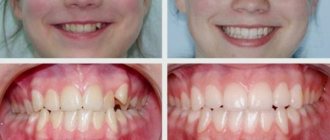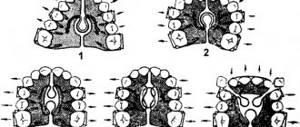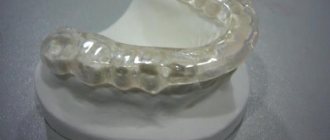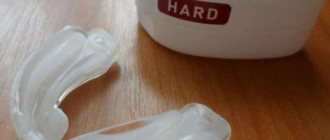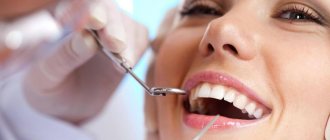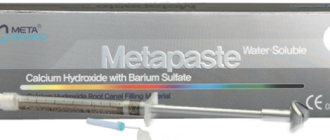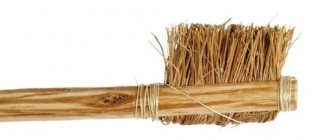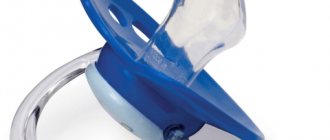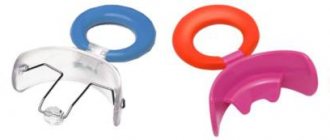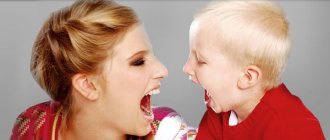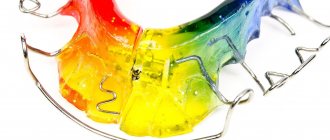An orthodontic plate is a special device necessary to correct the bite and teeth. The design includes the plate itself, a metal arc and fasteners. Metal parts are made of titanium and nickel alloy. The vestibular plate is made individually for each patient, based on the anatomical features of the jaw, the degree of curvature of the dentition and the desired result. The plate is made on the basis of previously taken impressions of the patient’s jaw.
Orthodontists at the 32 Dent clinic specialize in installing individual plates for the correction of pathologies in children and adults. Here we provide an integrated approach, clear control of the doctor, proper motivation, and a guarantee of results.
How does a vestibular plate work?
Each plate has a “memory”, thanks to which the metal arcs still return to their original positions. This is important in the process of correcting the bite, when the arch “moves” the patient’s jaw bones and teeth to the required correct parameters. The orthodontist’s task is to select a plate with metal elements of such thickness and tension force that it works effectively in each specific case.
The plate may also have a special “clasp” that corrects its position during the treatment period. The lock is tightened at certain intervals, thereby correcting the bite.
When is the record used?
- for the treatment of abnormal position of teeth (canines and incisors);
- to correct a situation where a patient has had a tooth removed that had erupted out of place;
- to obtain a healthy bite without removing healthy teeth.
Indications for wearing removable appliances
- Correction of uncomplicated dental occlusion defects in patients under 13 years of age.
- Jaw width that does not allow proper development of the dentition (too narrow or too wide).
- Incorrect position of the lower jaw.
- Insufficient length of the dentition.
- Incorrect position of teeth.
- Minor dental malocclusion.
- Serious defects in adults requiring complex treatment.
- Consolidation of the result during the retention period.
Why do patients choose vestibular plates? Advantages and disadvantages of designs
Pros of orthodontic plates:
- The price is within reason.
Low cost compared to the same braces (the cost of the design ranges from 8,000 to 10,500 rubles per course of treatment);
- Easy to wear and hygienic.
The patient can easily remove it from the mouth before eating, wash it, and put on the device independently.
- Eat what you like.
When wearing plates, there are no restrictions on food consumption. You can eat meat, hard and sticky foods. The design is simply removed before eating and put on afterwards. - Correction of the position by a doctor or independently.
During dental treatment, you can always adjust the tension force. This can be done by the patient himself, tightening the lock, or by the dentist during a follow-up visit.
- Optimal aesthetics.
People around see only a metal arc on the teeth, and with close contact, the interlocutor practically does not notice the plate.
The nuances of using orthodontic plates for teeth:
- Wear for about 2 years.
The estimated duration of treatment is 20 months or more, depending on the pathology of the bite. In any case, the treatment is worth it so that after about two years the teeth are straight and healthy.
- Some discomfort for the patient.
It is felt immediately after installing the device on the teeth or after tightening it, but patients quickly get used to this position.
- It is impossible to correct serious pathologies.
Unfortunately, vestibular plates are not able to correct serious pathologies of the bite and teeth. In this case, orthodontists recommend treatment with braces.
- It all depends on the patient's motivation.
This is especially true for children who do not always strictly follow doctors’ recommendations for regularly wearing plates. In addition, the plate must be worn on the teeth for 20–22 hours, and not every child agrees to follow this iron rule.
Types of records and devices in Moscow
There are two types of orthodontic functional appliances:
- to redistribute the force of chewing pressure - with special inclined biting surfaces, which the teeth touch when chewing;
- to restore myodynamic balance between the lingual and labial muscles, these are vestibular plates that are placed between the teeth and lips (or cheek).
In addition to orthodontic functions, these devices help normalize nasal breathing and make actions harmful to the bite impossible - finger sucking, lip biting.
Mechanical functional devices correct pathologies of teeth and jaws, expand dental arches, correct bites and promote other positive phenomena in the oral cavity. The mechanical action of the devices is pressure and traction, the strength of which is regulated by the doctor. For this purpose, special devices are used - an orthodontic screw, an elastic wire arch, a spring, a rubber rod.
Operating principles of records and devices
For children six years of age and older, when the period of mixed dentition begins, several types of structures are used: plate, functional, myofunctional trainers.
- The vestibular plate is a removable structure that is installed between the teeth and lips (cheek).
Removable plates help get rid of the soft tissue that has already formed between the teeth due to bad habits; they seem to move it away so that it does not interfere with the proper development of the jaw. These removable vestibular structures can be of varying complexity - with elements that normalize the position of the tongue, lower jaw, and stimulate the function of the orbicularis oris muscle. These elements are arches, screws, springs in a plastic base, which are held on the teeth with special clasp hooks.
The selection of records is carried out individually, but this does not mean that each device is made according to individual measurements - it can simply be selected for its intended purpose from existing standard designs of the appropriate size.
- Functional devices fix the jaw in a certain position. These are complex structures, the effect of which cannot be overestimated: with their help, you can stop the growth of an already developed jaw or stimulate the growth of an underdeveloped one, you can normalize the chewing function and restore facial muscles. In addition, it is these orthodontic devices that make it possible to correct the shape of the face, rearranging the relationship of the dentition, and regulating the condition of the temporomandibular joints.
There are many modifications of these orthodontic devices; their names emphasize the specific effects and usually also contain the name of the doctor who invented them: the Frenkel function regulator or the same Andreisen-Goipl activator, for example. Designs for functional purposes are made according to the patient’s impressions - each activator or regulator is individual.
- Myofunctional trainers, or as they are also called, elastopositioners, are the most modern removable orthodontic devices, specific elastic aligners with preset parameters for correct bite. Elastic positioners allow you to achieve the desired results, even if you wear them for less than four hours a day. They act on the tissues and muscles of the oral cavity at night and do not require as frequent visits to the orthodontist as is the case with conventional functional devices. This is convenient, and that is why trainers, myobraces, and LM activators have become the most popular recently.
What is typical is that a child can wear an orthodontic device both to restore the correct bite and for preventive purposes.
Age criteria for wearing plates and devices
Orthodontic plates and devices can be worn by children from three to twelve years of age, during the formation of the dental system.
Wearing mode
The regimen is determined by the doctor, the patient strictly follows his instructions. Usually:
- vestibular plates are removed for several hours during the day;
- functional devices are worn for 24 hours, removed only for hygiene procedures;
- Elastic positioners are worn for 1 to 4 hours during the day and are not removed at night.
Hygiene while wearing
All removable structures are removed before eating to prevent contamination and plaque. To clean the devices, use a toothbrush with soft bristles and two types of special gels - for everyday care and for deep cleansing.
How to activate plates and devices
The orthodontist activates the devices usually every two months. The activation mode by the patient (or rather, by the patient’s parents) is twice a week. This is done with a special key and strictly following the instructions received from the attending physician.
Types of orthodontic plates
Depending on the type of construction, individual vestibular plates can be removable or non-removable. We will not consider fixed structures, since they are used extremely rarely in orthodontic practice.
7 types of removable orthodontic vestibular plates:
1. Frenkel system – a removable plate with protective elements for lips and cheeks;
2. For one jaw – a vestibular plate, which is used to correct the position of single teeth;
3. Bruckle system - a plate designed to correct a strongly protruded chin;
4. A plate equipped with a retraction arc - a device that is necessary to correct the position of the incisor teeth;
5. The Andresen-Goipl system, affecting the lower and upper jaws;
6. A removable plate with a push element is designed to expand the patient's upper jaw;
7. A plate with a process, necessary for the correction of one tooth (most often incisors).
Plates for correcting “milk bite” for the youngest children
The bite can also be corrected for young children. There are a number of orthodontic plates for this purpose:
plate with a wire shutter - used to correct an open bite, when when the jaws are closed, there is a gap between them;
a plate with a special “bead” - a design that is used in case of incorrect position of the tongue, and, consequently, pronounced speech defects;
classic plastic plate - recommended for frequent mouth breathing (breathing correctly - through the nose), the habit of thumb sucking;
vestibular with a special element in the form of a visor - with underdevelopment of the lower jaw due to thumb or pacifier sucking.
The need to correct the bite of children with primary teeth is determined by a pediatric orthodontist. As a rule, this is necessary for genetic predisposition, jaw injuries, obvious orthodontic deviations, which are easier and faster to correct at this age. Plates for small children are equipped with special plastic holder rings to prevent accidental passage of the plate.
How should you wear the record? Basic rules and expert recommendations
The approximate period of correction using a plate ranges from several months to two and a half years.
Most of the time, the vestibular plate is in the mouth: always at night, as well as during the day with breaks for meals. The approximate total time the tablet remains in the mouth is 20-23 hours.
While the patient is eating or performing dental hygiene procedures, the plate is placed in a special container with liquid. It is always washed after removal from the mouth and before insertion.
The record should be thoroughly cleaned daily as part of standard hygiene rituals to prevent plaque from forming on the metal and plastic parts.
How to motivate children to wear an orthodontic plate?
- Demonstrate the result in 3D format so that a person sees his teeth after treatment and understands the importance of such changes;
- Convey all the benefits of wearing a plate: a beautiful face, clear speech, self-confidence, the ability to walk more often and attend clubs without missing out due to colds, straight and flawless teeth, proper development;
- It is important to approach treatment in a playful way, to perform myogymnastics in a fun format. The orthodontist will tell you about this when drawing up a treatment plan.
Operating principle
The product is attached to the molars (most often “sevens”) using supporting crowns. To activate the device, you need to tighten the screw counterclockwise with a special screwdriver. Each rotation involves 0.4 mm of distalization.
The plastic base rests on the roof of the palate and provides continuous pressure on the moving molars. At the same time, it does not create discomfort when wearing. The transfer of load to the frontal group of teeth is reduced. In cases where the palate is flat, the load is transferred to the upper incisors, which contributes to an increase in the sagittal gap.
